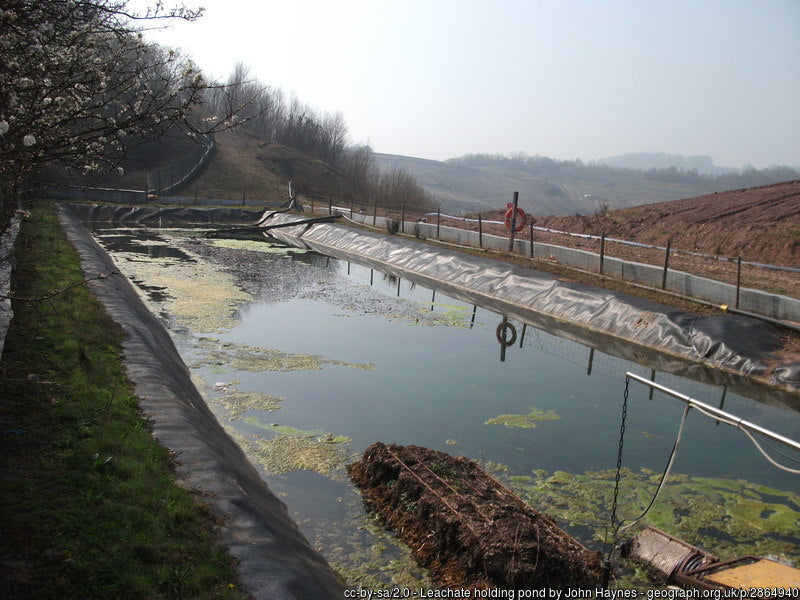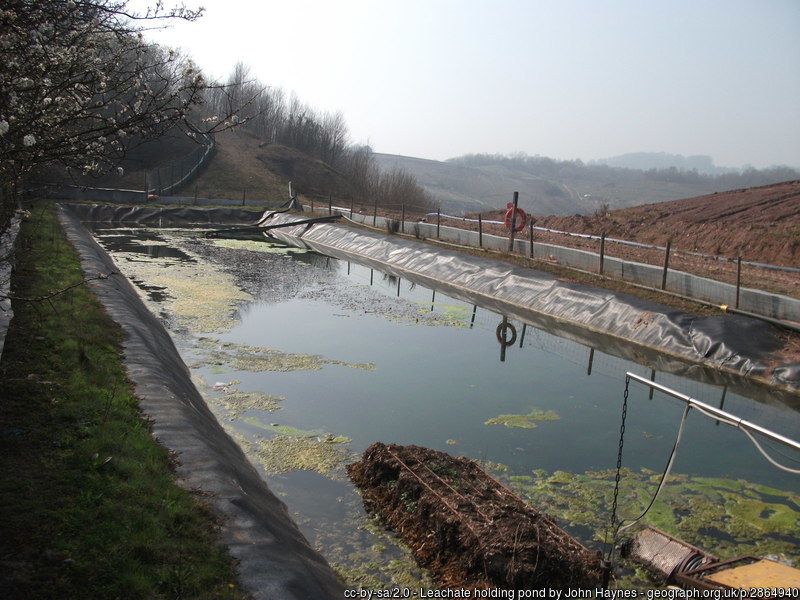News
Landfill Wastewater Sources & Leachate Collection Systems


Many landfills generate wastewater from various sources both on and off site, including landfill leachate, LFG condensate, wastewater from washing trucks and equipment on site, as well as drained free liquids, stormwater, contaminated groundwater, wastewater originating from laboratories, washing floors, and wastewater recovered from pumping wells. These different sources of landfill wastewater as well as leachate collection systems commonly used by landfills are discussed in more detail below.
Landfill Leachate
Landfill leachate consists of wastewater that has leached from the solid waste piled up on the landfill. This liquid may be rainwater that has filtered through the waste pile or it may be liquid that has come from the waste itself. Very often it is a combination of both and contains dissolved or suspended particles or contaminants that were removed from the waste as it passed through the material.
This waste water can potentially migrate into the broader environment over time. As water moves through a landfill, it can leach constituents of concern that are present in the waste pile, transferring them deeper into the substrate below. This poses a potential environmental and public health risk as both soils and groundwater can become contaminated.
However, new permitted landfill operators take steps to prevent migration offsite where they can contaminate the environment. A common preventative method is to install a liner at the base of the landfill combined with a leachate collection system. The liner prevents the leachate from penetrating the soil below and drains into the leachate collection system where it is collected and disposed of appropriately. Other methods of leachate collection include using trenches, slurry walls and similar containment options.
Various factors affect the amount of leachate generated, which varies from landfill to landfill depending on the type of waste that is accepted, the depth of the waste fill, the compaction of the waste, annual rainfall and age of the landfill, as well as landfill operating practices such as shredding waste, the amount of daily cover applied, and capping.
Landfill Gas Condensate
Landfill gas condensate forms when a liquid condenses in the landfill gas collection system as gas is extracted from the landfill. Hazardous gases such as carbon dioxide and methane are generated by microbes as they break down the waste on the landfill. These gases need to be removed to prevent the buildup of gases that can result in explosions on site, as well as off site should these gases migrate offsite.
A gas collection system traps water vapor as it condenses in the gas collection system. This condensate consists of volatile compounds and makes up a relatively small component of the total amount of wastewater generated by a landfill. According to estimates from an EPA survey of 158 landfill sites that generate landfill gas condensate, flow rates for LFG condensate range from 3 gallons per day to 11,700 gallons per day, with the median daily flow rate being around 343 gallons.
Contaminated Ground Water
Groundwater is fresh water that has filtered through the soil and rock substrate and collected below the landfill in a zone where the soil has become saturated. This groundwater can become contaminated with pollutants that are leached out of the landfill waste as water passes through it. Landfill leachate can contaminate groundwater sources when a landfill has no liner to prevent the flow of leachate to the surrounding soil, or it can occur at landfills that have a landfill liner system installed, but where contaminants collected in the liner system are released into the surrounding soil. Contamination of groundwater can also occur if the water table rises to such an extent that it penetrates the landfill or the leachate collection system. According to the EPA, there are approximately 163 landfill sites across the US that generate contaminated groundwater. Daily flow rates at these sites range from 6 gallons to 987,000 gallons per day, with 12,800 gallons being the median daily flow rate.
Recovering Pumping Wells
Contaminated groundwater is not only generated during water pumping operations on site, but also by various other operations that can also produce a stream of wastewater, for example during the construction and maintenance of wells, and also when water is purged from wells during sampling operations. Wastewater generated during these activities typically has a very similar composition to that of the local contaminated groundwater. An EPA survey of the landfill industry pinpointed 50 landfill sites where wastewater is generated from recovering pumping wells. Daily flow rates ranged from 0.3 gallons (minimum flow rate) to 80,200 gallons (maximum flow rate) with a daily median flow rate of 136 gallons.
Leachate Collection Systems
In order to comply with landfill effluent guidelines, many landfill sites employ some method of collecting landfill leachate to prevent it from migrating offsite together with suspended or dissolved contaminants derived from the waste pile that could potentially contaminate surrounding soil and groundwater. The leachate collection system’s function is not only to prevent pollutants from migrating offsite with leachate, but it also controls the level that the leachate is allowed to accumulate to above the liner before it is channeled away for collection.
Components of a Leachate Collection System
In order to be effective, the leachate collection system typically consists of a number of single components that collectively make up the whole system. Very often two primary leachate collection systems are needed: 1) an under drain collection system that is installed at the base of the landfill during the construction phase, which removes leachate from the bottom of the landfill; and 2) an outer peripheral system, which can be added once landfill operations are in full swing, and thus is often a method employed to remediate leachate issues that crop up once the landfill is operating.
The under drain system consists of a highly permeable drainage layer constructed out of porous granular material that facilitates lateral diversion of the leachate, and a non-permeable liner that forms the base of the system, which prevents leachate that filters down from the waste pile above from penetrating the soil and groundwater below. When the leachate reaches the non-permeable liner it builds up until saturated, whereupon Sure Pumpâ„¢ systems serve as an effective mechanism to divert it to a drainage point within the collection system.
Types of Leachate Collection Systems
A number of different leachate collection systems are used in the landfill industry. A survey conducted by the EPA in 1992, gravity flow drain fields were used at 50% of landfills. Today landfills in the US used compound leachate collection systems consisting of a leachate liner and leachate collection pipes, leachate/gas extraction wells, collection sumps with risers, perforated drains flowing to a pump station, with flow pipes channeled to a drainage basing, holding pond or storage tank.


